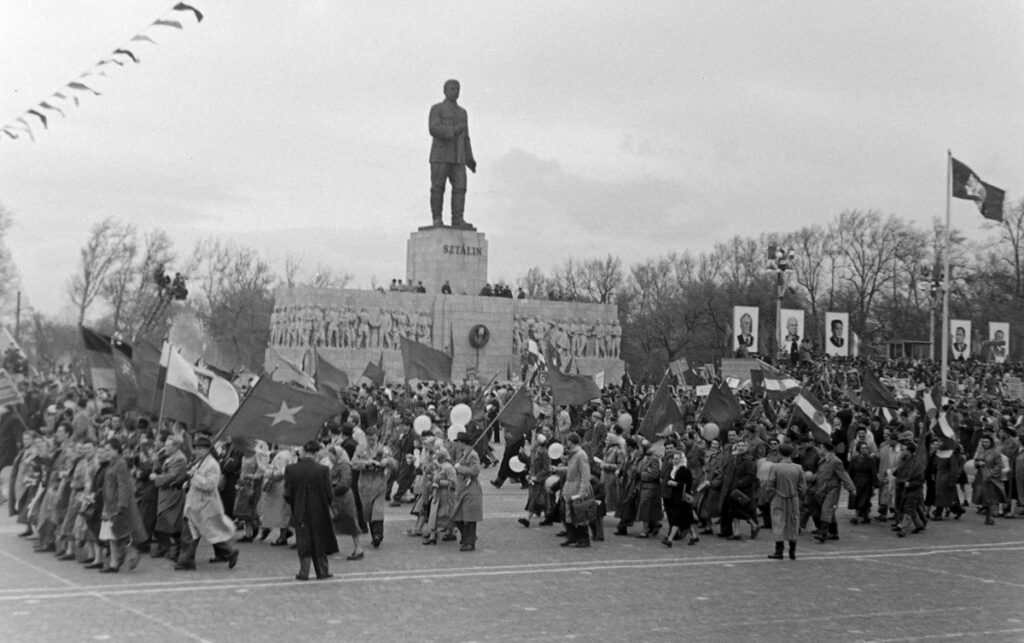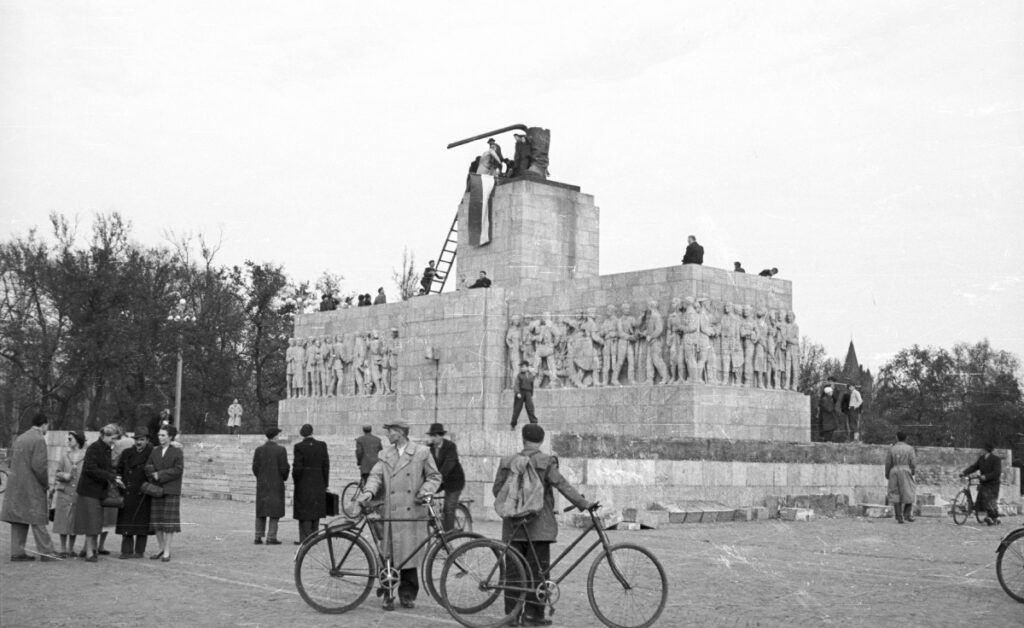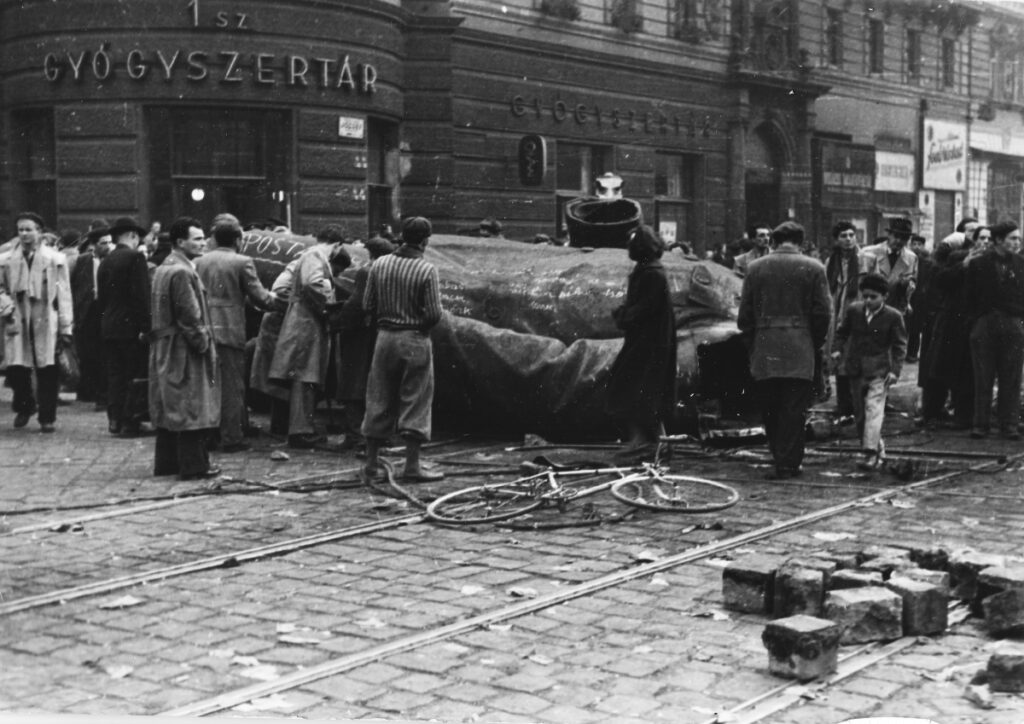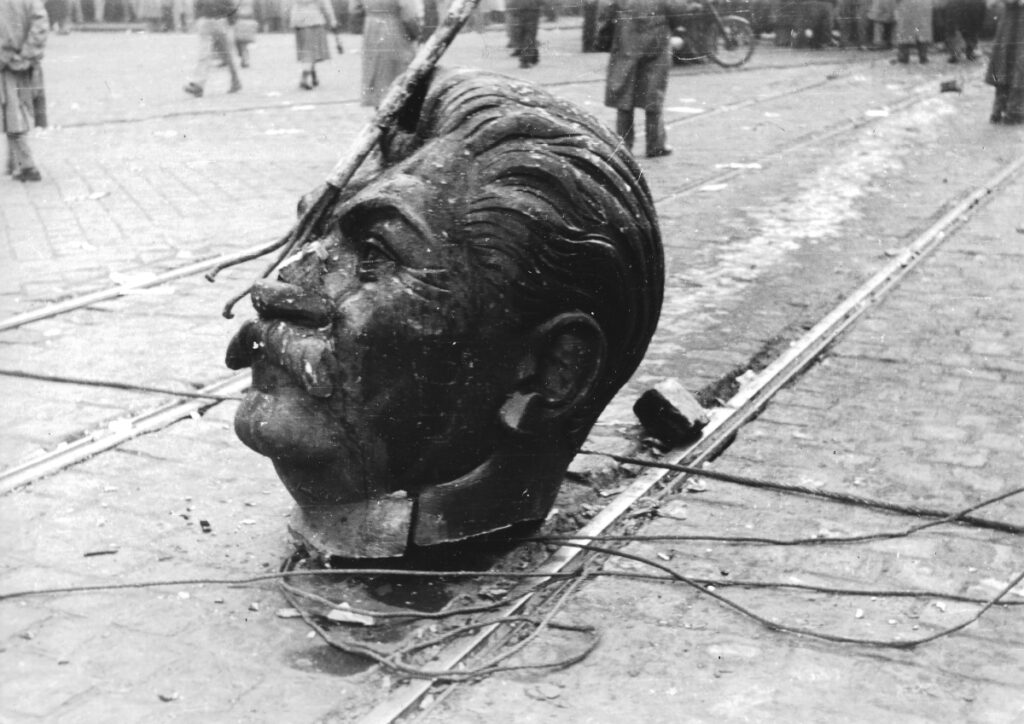The most spontaneous example of destalinization in the communist bloc came in Budapest on 23 October 1956, the first day of the Uprising, when crowds tore down the giant Stalin statue that had stood on the edge of the City Park since 1951.
The monument and the adjoining viewing rostrum for the Party bigwigs were the centrepiece of the 1 May parades.

Sculptor Sándor Mikus won a design contest for the right to build the statue. His work was unveiled on 16 December 1951, in time for what was then thought (wrongly, as it turned out) to be Stalin’s birthday on 21 December. The regime intended it to be a gift from the allegedly grateful Hungarian people, who appear on the bas reliefs welcoming Stalin as their leader. The statue and its pedestal had a combined height of around 25 metres.

Some of the metal used to make it came from statues of Hungarian heroes such as that of Gyula Andrássy, a 19th century prime minister.
Mass mourning for a tyrant
On 9 March 1953, people gathered here at the same time as Stalin’s funeral in Moscow. An estimated crowd of between 100,000 and 300,000 turned up for the mourning.
Predictably grief-stricken reactions followed Stalin’s death. ‘It can’t be, it’s not true that he doesn’t live! He raised us from poverty, turned us from nobodies into humans,’ said Ferenc Horváth, the head of a cooperative in Acsád. There were plenty of other statements in a similar vein.
The reactions of those who privately rejoiced at his death – surely very many people – were not recorded.
Stalin statue cut down to size

Insurgents tore down the statue on the first day of the Uprising. They used a mixture of cutting gear and steel ropes connected to trucks to pull down the statue. Just the Georgian’s boots remained on the pedestal because they were too thick to cut through. This led to the nickname Boots Square (Csizma tér) for the area.


The crowd then broke up the statue and dragged the wreckage through the streets. One of Stalin’s hands spent the next three decades in the garden of the actor Sándor Pécsi. It then found a more dignified resting place in the Hungarian National Museum where you can still see it.
The regime never replaced the statue.
Read more about the remaining sights of the era in Communist Budapest: The Guidebook.


